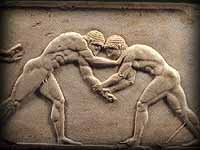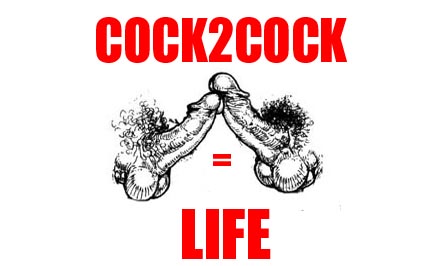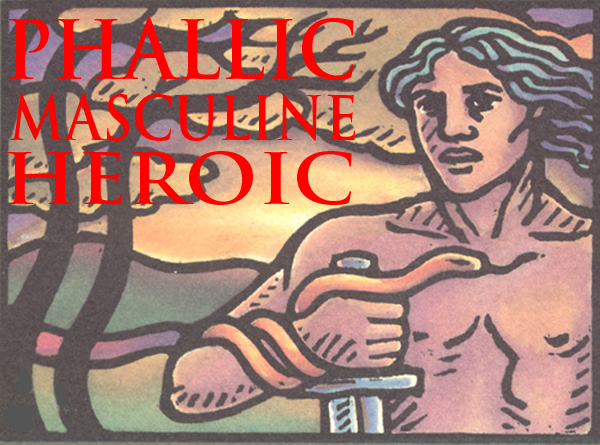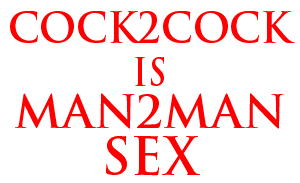




HIV Worsens

HIV Worsens
10-21-2004
Under the Radar, HIV Worsens
This is yet another mainstream media story about rising HIV infection rates in the US.
The first of these, titled With Fears Fading, More Gays Spurn Old Preventive Message, appeared in the NY Times more than three years ago.
Since then Chuck Tarver and I have reached out to numerous journalists, both mainstream and gay.
They have, with few exceptions, turned a deaf ear.
While continuing to pump out articles like this one; so many in fact,
that we now have a Media Watch page full of them.
Typically, there's absolutely no mention in this most recent article of sexual alternatives -- or even Fidelity.
All in all, a truly dismal performance by one of the nation's leading newspapers; but, as I say, not unusual.
Just remember, as you read this article, that HIV / AIDS is completely preventable.
A difficult disease to acquire, an easy disease to avoid.
Under the Radar, HIV Worsens
Sat Oct 16, 2004
Los Angeles Times
By Sharon Bernstein Times Staff Writer
Cynthia Davis, one of L.A.'s best-known AIDS activists, wrote to the
leaders of 300 black churches inviting them to a summit last weekend on
the worsening problem of HIV and AIDS in minority communities.
She heard back from five.
Then, a few days before the summit, Davis watched the vice presidential debate and was taken aback as Vice President Dick Cheney said he was "not aware" that black women were 13 times more likely to die of AIDS than white women. His Democratic challenger, Sen. John Edwards spoke instead about AIDS overseas and healthcare in general.
To Davis, an AIDS researcher at Charles R. Drew University of Medicine and Science who has tracked the epidemic since its emergence two decades ago, the incidents were just more signs of how far HIV and AIDS have fallen from the national agenda.
The dramatic protests demanding funding for AIDS research have become rare, and with a few notable exceptions, the glittering Hollywood parties raise money for other causes.
Federally funded campaigns once aimed at educating the general public are now targeted at a narrower group of people who already have the disease. And throughout society there is a misperception that new
anti-retroviral drugs have eliminated AIDS as major public health threat.
"Nobody's talking about it," said Thomas Coates, a UCLA infectious
disease specialist who was one of the first physicians to study AIDS in the 1980s. "I think people are tired of it."
With as many as 950,000 Americans infected with the virus that causes AIDS -- and another 40,000 new infections each year -- AIDS workers say they are confronting a level of ignorance and misconception reminiscent of the epidemic's earliest days.
Despite more than two decades of educational campaigns, there are an
estimated quarter-million people in the United States who have the virus but don't know it, many of them in minority communities, which have become the new epicenters of the disease.
False lore has reemerged: Anti-retroviral drugs can prevent the spread of the disease, unprotected anal sex can be safe, AIDS drugs are
killers.
"There's a lot of misinformation," said Dr. Anthony Fauci, director of the National Institute of Allergy and Infectious Diseases. "It's troubling. And it's in many respects really disconcerting. We've been through a terrible period in our history and now we seem to be regressing back."
Ignoring the Warnings
Precious Jackson, a 33-year-old with a quick smile and a fondness for bright clothes, thinks back on how she had ignored the warnings she had grown up with.
Then 26 and a student at Los Angeles Valley College, Jackson knew
enough about AIDS to ask her boyfriend if he had ever been screened for HIV.
He said he had taken two tests -- one showed he was positive, but
another showed he was negative.
She thought about using condoms, but when her new boyfriend said he
wouldn't consider it, she didn't press the matter.
Months later, after they had broken up, she got a letter from him -- he was infected after all. And by then, so was she.
"I was devastated, because I didn't follow my first mind," said
Jackson, now an AIDS worker in Los Angeles.
Complacency about HIV and AIDS -- a willingness to take risks that
would have been unthinkable at the epidemic's height -- is the unhappy
product of the progress that doctors and public health officials have made in controlling the disease.
"In part, we're being victimized by our success," said Ronald O.
Valdiserri, head of HIV programs for the Centers for Disease Control and Prevention. "There's a perception that HIV or AIDS is no longer a big threat, so why bother" to use condoms or abstain from unprotected sex.
The threat has indeed come down in size. At the epidemic's height,
140,000 people were diagnosed with HIV infections every year. Today, about 40,000 people per year are diagnosed. The number of deaths has
plummeted from a high of 51,400 in 1995 to about 16,000 in 2002, largely because of the success of anti-retroviral drugs.
"The results were so dramatic that everybody was joyous and giddy,"
said Coates of UCLA.
But the advances had unintended consequences.
"The drugs were rolled out without really thinking through their
implications for risk behavior," Coates said. "There was a resurgence in high-risk behavior, and prevention was off the map. Prevention programs fell by the wayside."
Then, two years ago, the government changed its strategy for combating the spread of HIV.
Instead of focusing its educational campaign on the general population, the CDC decided to target people who had the virus and teach them how to avoid spreading it.
The strategy is a proven public health approach to infectious disease control, and the CDC has invested considerable resources in testing programs designed to help people find out if they have been exposed to HIV.
But critics say the approach has also lessened awareness of the disease outside of the most affected groups.
In another strategy shift, the Bush administration has pushed for young people to adopt abstinence over condom use as a way to avoid spreading the disease.
The campaign has been effective in reaching many young people, but it does not focus on ways for sexually active people to prevent
transmission.
Combined, AIDS activists say, the two strategy shifts have made it more difficult to reach young women and gay men who don't have the disease.
And for all the hope and hype generated by the new drugs, it turned out that they didn't work for everybody. Some worked for a while and then quit; drug-resistant strains of the virus emerged; debilitating side effects drove some people off the medicines.
The number of new HIV infections, bullishly predicted by the
administration to drop in half by 2005, has been stuck for several years at about 40,000 per year. An additional 42,000 are diagnosed with AIDS each year.
There's been an escalation of new HIV infections among gay men, a
disappointing turnaround after years of reductions, and the number of
women with AIDS has quadrupled since 1986.
It's a tremendously difficult problem," said Sylvia Drew-Ivie, who runs a Crenshaw-area clinic that offers AIDS treatment for uninsured and indigent patients. "We've lost ground."
Rise Among Minorities
As the national debate has shifted, HIV and AIDS have set deep roots in minority communities.
In 2002, African Americans accounted for half of all new AIDS cases,
and Latinos accounted for 20%, according to the CDC. In the United
States, AIDS kills more black men between 25 and 44 than any other
disease.
Although the virus is still most likely to be passed on by men who have sex with other men, more than a quarter of AIDS cases are now women, most of whom are black or Latina. According to the National Center for Health Statistics, black females 15 and older are 15 1/2 times more likely to die of AIDS than whites -- a figure even more dramatic than the one presented in the vice presidential debates.
Minority communities were never the main focus of AIDS education, and the level of ignorance about HIV -- how it is transmitted, how it is diagnosed, how it is treated -- is high.
Rumors about the disease have become part of long-standing prejudices and conspiracy theories: The virus was made by the CIA to kill African Americans; you can only get infected if you sleep with gay white men.
Because the disease was initially associated with gay white men,
minority men and women are frequently misdiagnosed when they seek treatment, several AIDS activists said.
Gail Wyatt, associate director of the UCLA AIDS Institute, said the
same sort of outreach campaigns that were effective in teaching white,
middle-class gay men in the epidemic's early days do not always resonate in minority communities.
She said many African American women are hesitant to ask their husbands and boyfriends whether they have ever used intravenous drugs or had sex with a man -- a key indicator of whether the partner might have been exposed to HIV.
Because of continuing social taboos against homosexuality, many African American and Latino men who engage in sex with other men keep it secret.
Antonio Klatt, who is gay and has AIDS, calls himself "Alien" because he felt so different from his Guatemalan immigrant family growing up. He kept his sexual identity a secret, "doing my thing on the side."
When he was 15, he tried to tell his family, but his mother and father didn't believe him until he made a point of kissing a man in front of their house. After that, he said, he was not welcome in the family.
Some minority men never identify themselves as gay, despite repeated
sexual encounters with other men. Many marry and have children.
Some were exposed to HIV in prison, where condoms are not made
available despite sexual activity among the inmates.
Homosexual activity among men who consider themselves to be
heterosexual is so prevalent in minority communities that public health officials have developed a new category -- called "men who have sex with men" -- to identify them.
AIDS activists worry about the phenomenon -- called being on the "down low" -- blaming these closeted sexual encounters for much of the virus' spread to black women and Latinas.
Kevin Pickett, who runs a Los Angeles housing program for homeless
people with AIDS, said that subjects such as condom use and homosexual
encounters are so taboo in many African American and Latino households that some AIDS activists have had to resort to subterfuge to get people to participate.
"It can't just be HIV," said Pickett, who recently received a grant to help churches develop ways to teach parishioners about AIDS. "At
Crenshaw Christian Center they did it in connection with prostate screening. They said, 'Hey brothers, we got to give you this information [about HIV] too.' "
Tailoring the Message
To reach minority families, the CDC is relying on small organizations that tailor their messages to particular ethnic or economic groups.
This year, the federal government funneled $49 million to these groups, in the form of about 144 grants. More than 80% went to minority
communities, Valdiserri said.
But Valdiserri said the government also turned away more than 350
organizations that had applied for funds.
President Bush has proposed spending about $17 billion on HIV and AIDS in 2005, about 5% more than this year. But the portion of that money to be aimed at prevention remains flat.
That puts more pressure on private AIDS charities, who say their burden is growing as people with the disease live longer.
Charitable gifts to AIDS organizations has dropped along with the
public's sense of urgency about the disease.
At the peak of public awareness in the mid-1990s, AIDS Project Los
Angeles raised $5 million in a single Hollywood affair, said APLA executive director Craig Thompson. The last gala, in 2000, raised $1.6 million.
Overall, donations to APLA, which will hold its 20th annual AIDS Walk on Sunday, have dropped from $13 million in 1994 to about $10 million this year.
"AIDS in the early '80s was about people dying and the government doing nothing," Thompson said. "That was the perception. That galvanized America around a crisis. And it's very different now."
For small agencies in poor communities, it's even harder to raise
money.
"There's not an Elton John or a David Geffen or an Elizabeth Taylor," Pickett said.
Carrie Broadus, executive director of the Los Angeles AIDS service
group Women Alive, said that money was only part of the problem.
"I want to see people be able to talk about it around their dinner
tables and discuss it," she said. "That's what's killing us -- it's the
silence."
Times staff writers Faye Fiore and Thomas Maugh II contributed to this report.
[emphases mine]
For more stories like this one, consult our Man2Man Alliance Media Watch.
Bill Weintraub
Add a reply to this discussion
Back to Personal Stories






AND


Warriors Speak is presented by The Man2Man Alliance, an organization of men into Frot
To learn more about Frot, ck out What's Hot About Frot
Or visit our FAQs page.

| Heroes Site Guide | Toward a New Concept of M2M | What Sex Is |In Search of an Heroic Friend | Masculinity and Spirit |
| Jocks and Cocks | Gilgamesh | The Greeks | Hoplites! | The Warrior Bond | Nude Combat | Phallic, Masculine, Heroic | Reading |
| Heroic Homosex Home | Cockrub Warriors Home | Heroes Home | Story of Bill and Brett Home | Frot Club Home |
| Definitions | FAQs | Join Us | Contact Us | Tell Your Story |

© All material on this site Copyright 2001 - 2010 by Bill Weintraub. All rights reserved.





